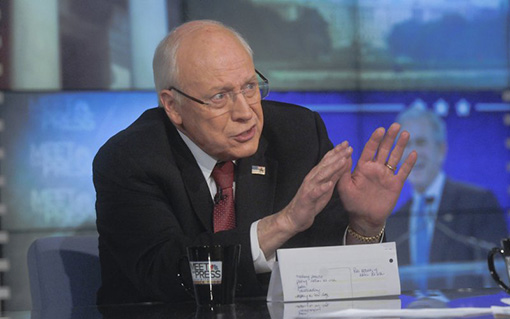A new movie and a visit to the 9/11 memorial remind us what’s at stake when America doesn’t live up to its ideals.
On a Saturday buffeted by a cold December wind, thousands strolled with somber step through one of New York City’s two historic cathedrals. Outside, hundreds more waited patiently in a long line to enter; once inside, their voices were muted and the very young, holding a parent’s hand, would be told about a brilliant, cloudless September morning when America changed forever.
This was the National September 11 Memorial Museum over the weekend, a place that documents our vulnerability as well as the nobility of so many among the dead. It is miles from St. Patrick’s, and Saturday the distance between the two sites was quite congested, with about 25,000 marching along Sixth Avenue in orderly protest over the recent deaths of Eric Garner and Michael Brown, two events that have also altered the country.
This was also the week when the United States Senate Intelligence Committee released an indictment that declared beyond doubt that the CIA tortured some captured during the war that began on that horrific September day 14 years ago. In all three locations—the museum, the Fifth Avenue cathedral, the streets and sidewalks of the world’s most famous city—prayers for the souls of the departed resonated.
Surrounding all of these places and hundreds of others you could see the season’s lights brightening store windows and you could see the mobs of tourists pushing against each other to take pictures of the enormous tree standing in splendor above the ice rink at Rockefeller Center. Here, in the middle of the warped excess that is the heart of Fifth Avenue windows, there seemed to be no sadness and little memory of the defining event of our century.
At the memorial museum, it is the eyes of those taken by terror that speak softly, silently, to visitors. Portraits of most of the 2,977 victims on September 11 are displayed on the walls. They died for simply going to work that morning, killed by religious fanatics, homicide victims all.
The eyes of people like Thomas Patrick Cullen III, firefighter, Squad 41, husband, father, 31 years old. The eyes of Welles Crowther, the man in the red bandana, Boston College graduate, equities trader at Sandler O’Neill. The eyes of Betty Ong, a flight attendant on American Airlines Flight 11, dead at 45, and the eyes of Amy Sweeney, another flight attendant on Flight 11, wife, mother of two, gone at 35. And so many more.
We have been at war for a long time and the fight promises to continue well into the future. We are a huge, complex, diverse country still offering freedom, opportunity and hope. Nobody is knocking on the door of places like China, Egypt, India, Poland, Mexico—you can keep going—for a shot, a chance, to start a new life. For millions on the outside looking in, this is where they want to live, America.
And that’s why the semantics, twisted logic and debate over what is and what isn’t torture is so disturbing. We can concoct all the false rationales available. We can construct excuses based on the evil that occurred September 11th. We can go back and forth about the unknowable: Was torture effective? And we can listen to the pathetic, creepy bravado of a former vice president, wrong on nearly every decision he made. But all of it cannot erase the fact that our country is a 250-year-old testament to ideals that became blasphemy in the hands of a few while the nation reeled in a fear ignited on a single morning in September.
And if you want proof of what the country is really all about, just walk through the National September 11 Memorial Museum. Here it is, in the faces of the victims, in the stories of bravery, in the souls and memory of the survivors, the next of kin. The honored dead came from all over the world, from different lands, spoke different languages. They were rich, poor, black, white, brown, Asian, Hispanic, Catholic, Jewish, Muslim, Protestant. They were waiters, millionaires, stock brokers and salespeople, secretaries, firefighters, cops, young, old, their hopes, dreams, frustrations and futures incinerated by those who were and are twisted in their desire to destroy what all of us hold and too often take for granted.
During the week I happened to see a movie, Unbroken. It’s the film version of an incredible life splendidly captured in Laura Hillenbrand’s bestseller about the staggering story of Louie Zamperini.
He was a young Army Air Force lieutenant whose plane crashed in the Pacific in May 1943. He spent 47 days on a raft and survived only to be captured by the Japanese. He then spent two and a half years in various prison camps in Japan. And he was tortured repeatedly, brutally, and mercilessly by his captors. And he survived again, returning from the barbarism of war and the obscenity administered by others to rebuild and live a life once shattered by the horrific reality of what human beings are capable of doing to each other.
A couple of summers ago I sat with Zamperini at a ballgame at Fenway Park. He was a little guy, small in stature, but that was not who he really was because his heart, his being, his experiences, and the light in his eyes made you know he was actually the best of us: a believer in redemption, the future, the idea that we are all bit actors in the great American story where the strength of the country is stronger than any opposing force.
Zamperini died July 2. He was 97 years old. He lived through World War II, lived across all the decades in between, a time when we seemed to be constantly at war; the Cold War, Korea, Vietnam, Bosnia, Iraq, Afghanistan, generations of battle.
Too bad he is not still with us. I would have liked to hear what Louie Zamperini had to say in response to Dick Cheney’s declaration that torture was OK with him, a vice president of the United States of America.
https://www.thedailybeast.com/articles/2014/12/15/dick-cheney-s-creepy-torture-bravado.html







